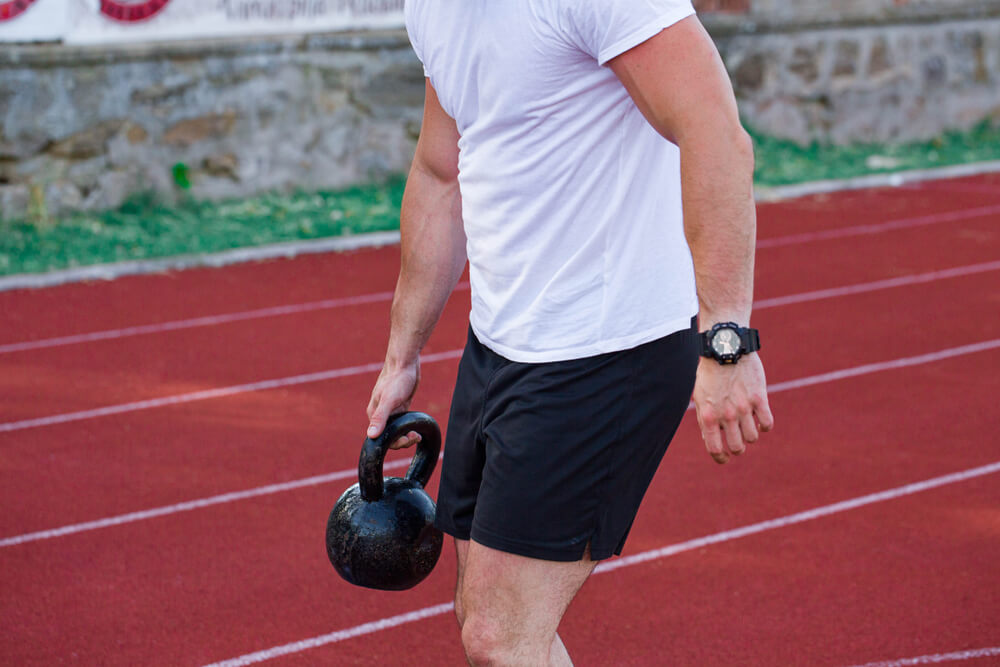Ever notice how something feels heavier when it’s uneven? Like when you’re carrying groceries and one bag’s packed with milk, canned soup, and a watermelon while the other holds a loaf of bread and air? Yeah, that’s more or less the principle behind offset training—but don’t worry, the goal isn’t to crush you under the barbell. It’s all about building core strength, balance, and functional power in ways your mirror-perfect lifts can’t.
Sound intriguing? It is. And if you’re someone who trains to be strong and capable, offset training is a tool you need in your arsenal. Stick around, and I'll give you the lowdown on what it is, why it works, and how to make it work for you without looking like you lost a bet at the gym.
What Is Offset Training?
Offset training is like weightlifting's rebellious cousin. Instead of keeping everything neat and symmetrical, you purposefully load more weight on one side or use uneven tools like kettlebells or sandbags. The imbalance forces your body to compensate, recruiting stabilizing muscles (some of which you probably forgot existed).
For example, imagine doing a single-arm dumbbell bench press. You’re holding a heavy dumbbell in your right hand while your left hand does... absolutely nothing. Meanwhile, your obliques, core, and stabilizing shoulder muscles are screaming, "We got this... maybe!" The result? You get stronger, more balanced, and more prepared for real-world challenges like lifting awkward objects or surviving a sibling’s surprise tackle.
Offsetting the Benefits (See What I Did There?)
Why bother with offset training when perfectly balanced barbells exist? Great question, but here’s why offset training deserves a starring role in your workouts.
1. Core Strength Without Crunches
If I had a dollar for every time someone said, “I want a strong core,” I’d be writing this from a beach somewhere instead of a laptop. The reality is most people default to crunches, despite their questionable effectiveness and monotony. Offset training turns almost any lift into a core workout because your body must stabilize under uneven load. Deadlifting with a kettlebell in one hand? Your core is working overtime to keep your spine from twisting into a pretzel. Take that, crunches.
2. Improved Balance and Coordination
Life isn’t symmetrical. That’s why you slip when someone hands you a lopsided bag of dog food. Offset training not only builds strength but also improves your balance and coordination. The next time you’re tasked with hoisting an awkward load (like said dog food or your kid’s car seat), you’ll tackle it with ninja-like grace instead of a strained grunt.
3. Better Stabilizer Development
Traditional, symmetrical lifts are dominated by your big, flashy muscles like the pecs and lats. Offset training, on the other hand, makes sure the unsung heroes of your body get some love too—like your rotator cuff muscles, obliques, and hip stabilizers. These smaller muscles are critical for injury prevention and improving movement quality, but they don’t get much attention during regular lifts. Offset training changes that.
4. Real-World Application
If your fitness goal is to look good in a tank top and dominate Instagram, fine. Stick with perfect, symmetrical lifts. But if you’re training to handle life’s messy realities (think shoveling snow, carrying furniture, or wrestling toddlers into pajamas), offset training is your ticket. It makes you functionally strong, which means you’ll kill it in real-world scenarios and not just on gym PRs.
5. Break the Plateau
Doing the same thing over and over gets boring, and when you plateau, you feel stuck. Offset training forces your neurally complacent body to wake up and adapt. By challenging your balance, coordination, and stabilizers, you create "new" stressors that your body has to adapt to, reigniting those strength and muscle gains.
How to Incorporate Offset Training Into Your Routine
Now that I’ve sold you on offset training, you might be wondering how to do it without injuring yourself or earning confused stares at the gym. Start with these moves as part of your regular program.
1. Offset Dumbbell Press
- How to do it: Lie on a bench with a heavy dumbbell in one hand and the other hand free. Press the weight up and down while keeping your core and hips stable.
- Why it works: Challenges your pecs, front delt, core, and shoulder stability.
2. Suitcase Deadlift
- How to do it: With a kettlebell or dumbbell in one hand, execute a deadlift as usual but keep the weight on one side.
- Why it works: Teaches your body to resist lateral flexion while strengthening grip, core, and legs.
3. Offset Farmer’s Carry
- How to do it: Grab a heavy kettlebell or dumbbell in one hand and carry it while walking straight. Keep your torso upright; no leaning to one side.
- Why it works: Torches your obliques, improves grip strength, and enhances your cardiovascular endurance.
4. Unilateral Overhead Press
- How to do it: Press a dumbbell overhead with one hand at a time. Focus on not tilting your torso.
- Why it works: Builds unilateral shoulder strength and forces your core to compensate for the imbalance.
5. Bear Crawl with Offset Load
Some sadistic genius figured out you could make this universally hated exercise even worse (and more effective) by having one side carry weight, like a sandbag or dumbbell.
- How to do it: Get in a crawl position. Hold a sandbag in one hand while crawling forward with control.
- Why it works: This move obliterates your core and improves coordination.
Play It Smart
Offset training is amazing, but it’s also not something you should wing. Start with moderately heavy weights and focus on your form. If you load too much too fast, you risk injury. And remember, your goal is to integrate, not replace. Balance symmetrical lifts (like squats and traditional deadlifts) with offset movements for the best of both worlds.
The Takeaway
Offset training is like a secret menu item at your favorite gym. Not everyone knows about it, but the ones who do can’t shut up about how great it is. It builds core strength, balance, coordination, and functional power that mirror-perfect lifts just can’t replicate. Plus, it’s a surefire way to bust through training monotony and keep your workouts fresh.
Next time you’re stuck in a workout rut or ready to take your training to the next level, grab a kettlebell, dumbbell, or sandbag, and get lopsided. You’ll feel the difference by how much stronger and more capable you become—with a surprisingly sore core to prove it.





